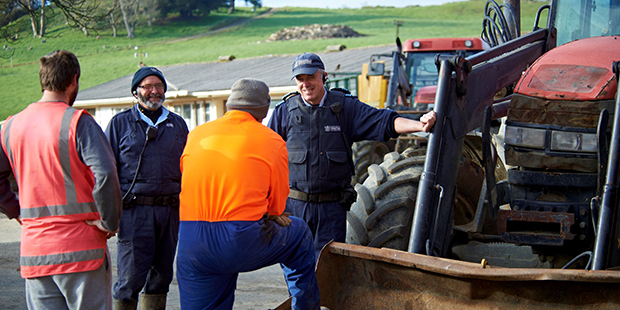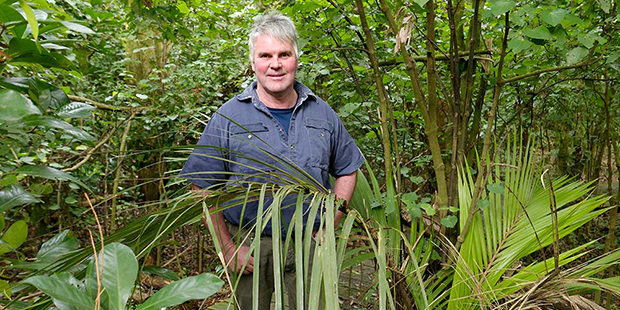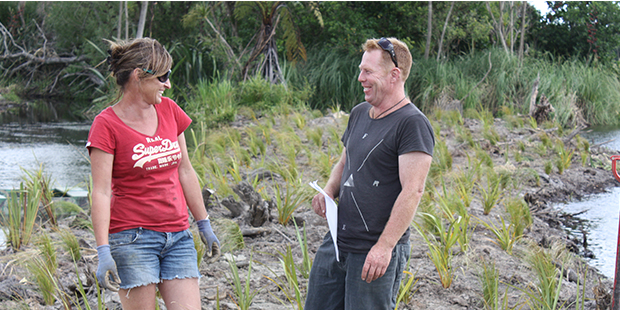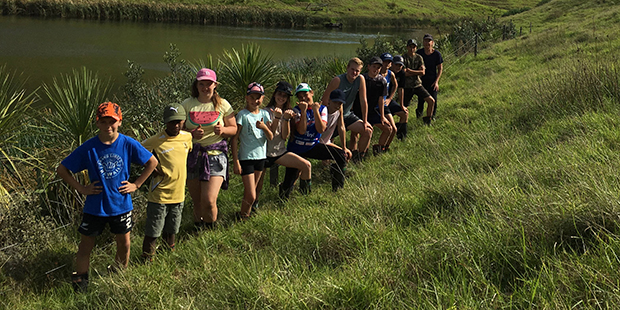‘Precious’ harbour waters get help
School students grow tens of thousands of plants for waterways near fragile harbour ecosystem.


Farmers near the Northland town of Dargaville are receiving help from an unlikely quarter in their efforts to reduce pasture run-off – a group of school students.
A team of 29 pupils at Dargaville Intermediate operate a nursery at the school, every year growing more than 10,000 native plants which they sell to local farms for planting along waterways, dune lakes, wetlands and fence lines near the Kaipara Harbour, to help improve water quality.
Under the watchful eye of deputy principal Diane Papworth, the students also help with the planting, taking time out from class four or five times a year for planting trips.

Photo / Supplied
Photo / Supplied
“The kids all want to be in on it,” says Papworth. “They see the benefits and understand they are helping improve our environment. One of the (dairy) farmers we supply, who originally approached us because he had heard what we were doing, told the kids they are making a difference and helping re-establish wetlands.
“For him to stand there and say that to the kids – that’s why we do it.”
Much of the run-off from land in the district ultimately finds its way to the Kaipara Harbour, a large but fragile ecosystem home to many species of native fish and birds and an important breeding ground for varieties of fish including snapper and flounder.

Photo / Supplied
Photo / Supplied
The school nursery began in 2011 after Papworth, a science teacher, took a year off to study riparian management on a Teaching Fellowship hosted by the Kaipara District Council: “I’ve always had a passion for the environment and science and riparian planting was something I wanted to look into.”
Papworth also spent time during that year with the Whaingaroa Harbour Care Group in Raglan (the group’s website says it has planted 2 million trees along waterways in the district), completed a riparian planting course with the National Institute of Water and Atmospheric Research (NIWA) and studied plant identification through the Department of Conservation (DOC).
“I’ve moved around a lot of places in New Zealand but when I came to Dargaville I learnt about the Kaipara Harbour and how precious it is,” she says. “The kids here were learning about marine reserves but we decided we needed to do something about our environment.”

Photo / Supplied
Photo / Supplied
The nursery idea was born. The project was given a kick-start in 2011 by the Board of Trustees who included it in the school’s strategic plan and budgeted $4000 in the first year to help get it off the ground, the money used to build a shade house and buy materials.
Each year Papworth and other staff work with between 20 and 30 students: “We usually have more than that wanting to be involved, so I give everyone a go at working in the nursery. The choice comes down to not only a balance across classes, but their passion and experience.
“Many of them love working on the land and being outdoors,” she says. “Those who miss out have other opportunities like looking after their class recycling or vegetable gardens.”

Photo / Supplied
Photo / Supplied
The students are involved in the whole process – from eco-sourcing the seeds (some from the stands of native bush at the school), sowing them in trays, placing them in planter bags, feeding and watering the plants as they grow and, ultimately, planting in the community.
They also play a part in maintenance, spending time weeding around the fledgling plants and re-planting what hasn’t grown or been eaten by pests such as hares.
Papworth estimates the students themselves have planted out up to 20ha of land mainly with flaxes, cabbage trees, manuka, kanuka and carex grasses. They also nurture and plant larger varieties including kowhai trees, totara and pohutukawa depending on what seedlings are collected.

Photo / Supplied
Photo / Supplied
The school’s motto is ‘learn from the past, plan for the future, make the most of today’ and Papworth says one of the main aims of the project is to teach the students the importance of being kaitiaki (guardians) of the Kaipara.
“They recognise we are restoring biodiversity corridors for flora and fauna, improving waterways and land sustainability,” she says. “It’s great when we can show them how much seedlings have grown, some of which were planted by their older cousins, brothers or sisters years before; they see this and go ‘wow’.”
The nursery’s first ‘client’ was the Integrated Kaipara Harbour Management Group (IKHMG) which used the plants on a number of their “flagship” sites. Today the school supplies four local farmers - each of whom have committed to working with the school for 10 years - while it also supplies natives for planting at Taharoa Domain at the Kai Iwi Lakes.

Photo / Supplied
Photo / Supplied
Papworth says the school sells plants to farmers for $2 each but does not charge for time spent planting or for petrol and other expenses: “We are not there to make a profit and all the money we make goes back into the school or for paying for things such as potting mix.”
Small quantities of plants are also sold to school families and the wider community.
The project, which Papworth says is “very much community driven and supported”, and involves other staff members including the principal Brendon Lucich, was Highly Commended in the environmental action in water quality improvement category of the 2019 Northland Regional Council Environmental Awards.
To see what the students are up to go to: disintermediatenursery.blogspot.com





